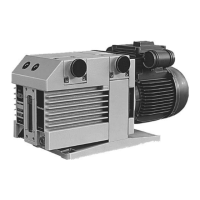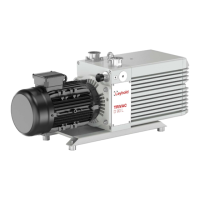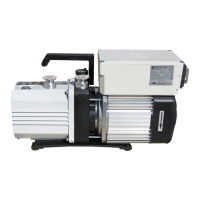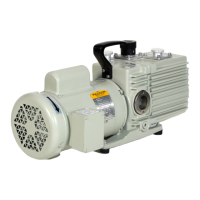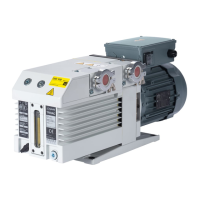Installation
19GA01601_002_C1 - 03/2018 - © Leybold
The rubber feet act as vibration absorbers. They must therefore not be
compressed by screws.
When installing the TRIVAC pump, make sure that the connections and
controls are readily accessible.
The site chosen should allow adequate air circulation to cool the pump
(keep front and rear unobstructed).
The oil-level glass must be visible.
Note the ambient conditions during operation
The ambient temperature should +40 °C not exceed and not drop below
+10 °C (seeSection4.3.3).
For installation sites over 1000 m above sea level and/or a relative atmos-
pheric humidity of over 90%, you must discuss this with technical sales.
The maximum heat which is dissipated corresponds approximately to the
installed amount of motor power.
Install the pump so that only minimum quantities of dust can settle on the
surfaces. Remove dust deposits in regular intervals.
The oil filling is included separately in the case of replacement pumps.
Before operating the pump you must fill in the correct quantity of oil, see
Section 5.4.
3.2 Normal use
TRIVAC pumps can pump gases and vapours, and evacuate vessels or
vacuum systems in the fine vacuum range.
The pumps are suited for pumping water vapour within the specified water
vapour tolerance limits. Avoid vapours that can condense into liquids when
being compressed inside the pump, if these substances exceed the vapour
tolerance of the pump. In the case of wet processes we recommend the
installation of liquid separators upstream and downstream of the pump as
well as the use of the gas ballast and we recommend to run the pump for 30
minutes allowing it to warm up before beginning with the pumpdown
process.
Pumping of dust or much contaminated media
The pumps are not suited for pumping of liquids or media which carry
large quantities of dust. Corresponding protection devices need to be pro-
vided.
Our technical sales department is available for further advice in these matters.
NOTICE
NOTICE
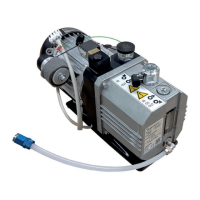
